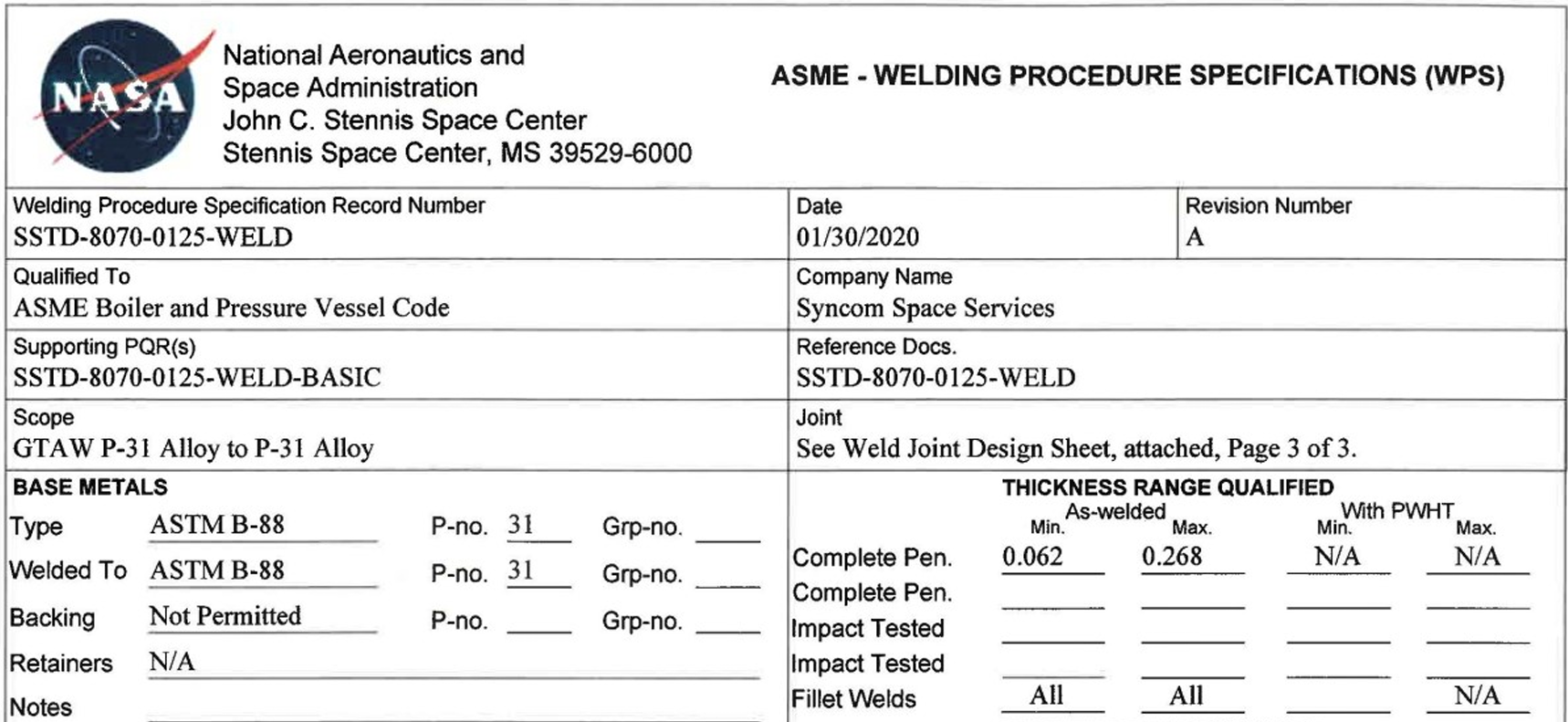Chapter 18: Welding Procedure Specifications
Overview

Not all welding jobs require the use of welding procedures but the higher skilled and typically higher paying jobs do. The higher the quality expected of a product, the more value it has to the owner because it can handle more stress, temperature, corrosive environments, and possibly last longer. For instance, a stainless steel handrail with weld joints that are barely visible is much more appealing to look at than a handrail you might have attempted to make the first day you ever welded.
As a welding student, you should know what a welding procedure specification (WPS) is and how to use it for both welding certification tests and job interviews. Not knowing how to read a WPS may close doors to jobs in your career or make it harder to get through a job interview. If the interviewer asks you what your thoughts are on a WPS for a typical fabrication of theirs, will you want to know how to read it and get excited about making what is on the WPS? Or will you prefer to be in a position where you do not know what to say?
When explained, a WPS is often compared to a recipe for baking or cooking: You don’t always need a recipe to bake or cook, but if you ever want to make that favorite barbeque or a meal that matches the taste and texture of the original, you need to follow its recipe. To extend the comparison, some people may not want to give up their recipe. Try getting the recipe from the maker of your favorite beverage or for your favorite restaurant meal and you’d have a hard time. Those are closely held company secrets.
The same thing goes for welding procedures. Like recipes for cooking, you don’t always need them. You might be making small works of art, such as a rose using the GTAW process, or cutting and welding plates together for lawn art. These items don’t have strict requirements other than what’s viewed by the eye of the beholder. But if you weld on something that could injure or kill someone if it fails, then you may be required by law, contract, or insurance to follow a qualified WPS. If you build a building that can’t be insured due to inadequate quality control then it is worthless to the builder because they would have a difficult time selling it. Also, if you weld something that ends up injuring or killing someone and you didn’t follow the basic quality assurance of a WPS, you are likely to be sued and face other serious legal issues. If you own your own welding business and are in this situation, you might lose it all.
Also like a recipe, a WPS may not be public because it has company-sensitive information in it. Because a manufacturing company’s WPS is rarely publicly available, this chapter makes use of a public WPS from the National Aeronautics and Space Administration (NASA).
In this chapter we cover how a WPS is developed and how it is used so you are prepared and confident when you are asked to read one.
Objectives
After completing this chapter students will be able to:
- Identify the main parts of a WPS.
- Describe why a WPS is important to a welder or welding operator.
- Describe how the format of a WPS can be unique like a blueprint but familiar enough for a welder to interpret it.
- Define who uses WPSs.
Key Terms
- Code welds
- Essential variables
- Representative
Attributions
- Chapter opening image: John C. Stennis Space Center Standard Procedure for Welding Copper Tube by National Aeronautics and Space Administration, John C. Stennis Space Center in the Public Domain; United States government work

